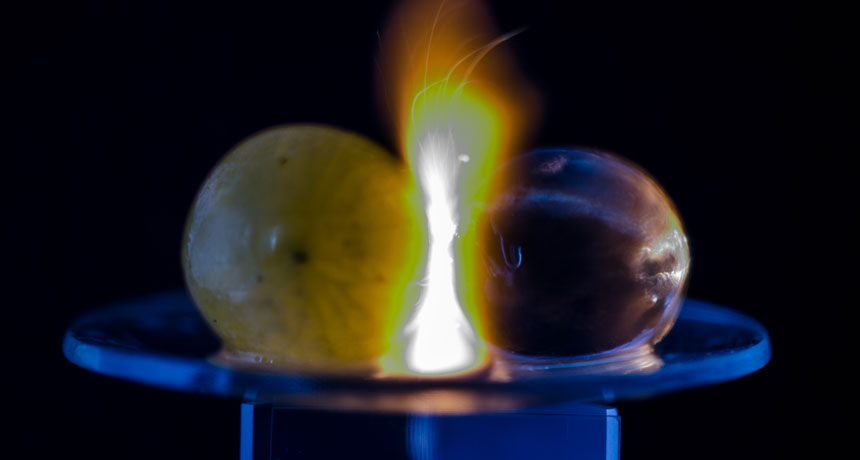atom The basic unit of a chemical element. Atoms are made up of a dense nucleus that contains positively charged protons and uncharged neutrons. The nucleus is orbited by a cloud of negatively charged electrons.
electron A negatively charged particle, usually found orbiting the outer regions of an atom; also, the carrier of electricity within solids.
fireball A lump of rock or metal from space that hits the atmosphere of Earth. Fireballs are meteors that are exceptionally bright and large.
fruit A seed-containing reproductive organ in a plant.
hydrogel A “smart” material that can change its structure in response to its environment, such as the local temperature, pH, salt or water concentration. The material is made from a polymer — a chain made from links of identical units — that have free, water-attracting ends sticking out. So in the presence of water, it may hold (bond) those water molecules for quite a while. Some hydrogels are used in baby diapers to hold urine, in potting soils to hold water near to plants until they need it and in wound dressings to keep a sore from drying out.
ion (adj. ionized) An atom or molecule with an electric charge due to the loss or gain of one or more electrons. An ionized gas, or plasma, is where all of the electrons have been separated from their parent atoms.
plasma (in chemistry and physics) A gaseous state of matter in which electrons separate from the atom. A plasma includes both positively and negatively charged particles. (in medicine) The colorless fluid part of blood.
Proceedings of the National Academy of Sciences A prestigious journal publishing original scientific research, begun in 1914. The journal's content spans the biological, physical, and social sciences. Each of the more than 3,000 papers it publishes each year, now, are not only peer reviewed but also approved by a member of the U.S. National Academy of Sciences.
radiation (in physics) One of the three major ways that energy is transferred. (The other two are conduction and convection.) In radiation, electromagnetic waves carry energy from one place to another. Unlike conduction and convection, which need material to help transfer the energy, radiation can transfer energy across empty space.
resonate To reverberate, like a ringing bell, producing a clear tone or frequency of radiating energy.
resonator (in physics) Something that traps energy at certain frequencies, causing it to reverberate. See resonate.
salt A compound made by combining an acid with a base (in a reaction that also creates water). The ocean contains many different salts — collectively called “sea salt.” Common table salt is a made of sodium and chlorine.
wave A disturbance or variation that travels through space and matter in a regular, oscillating fashion.








